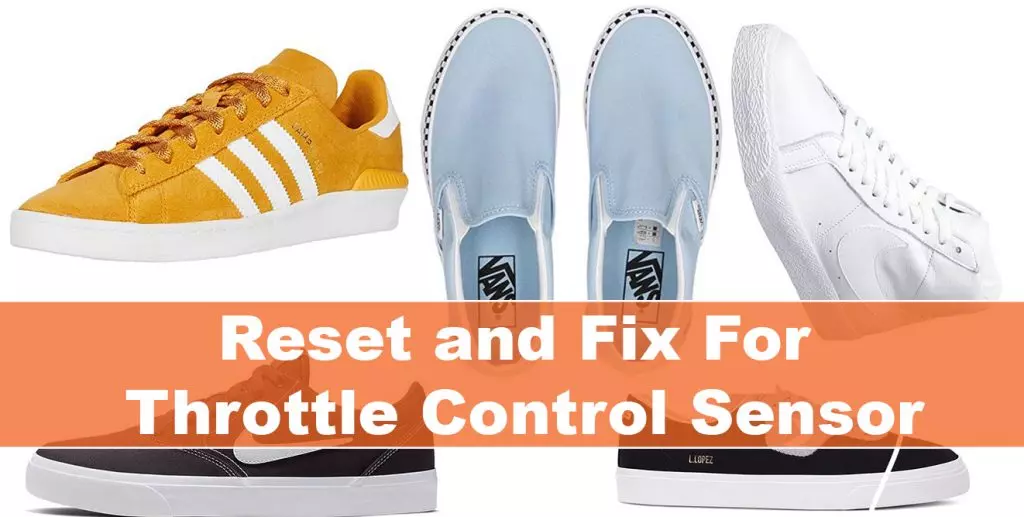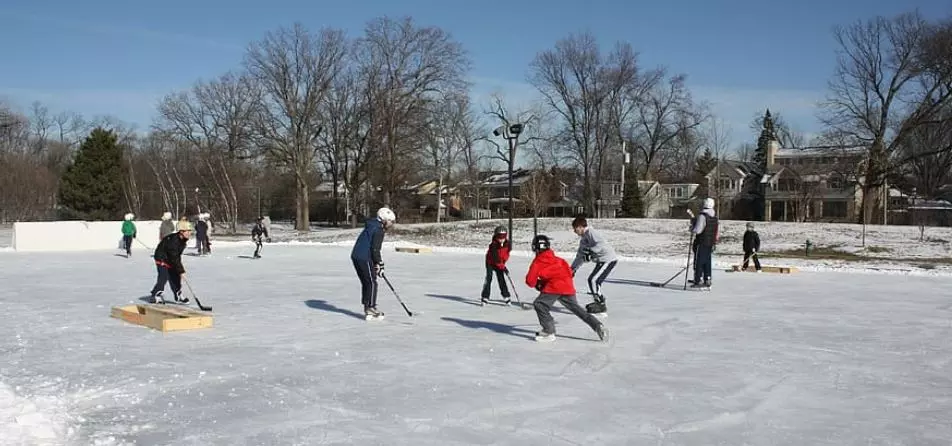
Do you want to enhance your ice skating skills but only have a limited amount of time to spend on the rink? Off-ice practice is just as crucial as on-ice practice for figure skaters. The six basic types of workouts you should concentrate on are detailed below. In addition, I discuss the many sorts of exercises to think about and the equipment that can assist you.
The technical aspects, however, necessitate a great deal of ice time. However, it would help to practice off the rink to achieve your objectives.
During a jump, the lower back, and abdominal muscles, for example, come into play. They tighten to counteract the rotational force of the jump. Your hops will improve if your core is strong. Read on to learn more exercises and tricks to improve your skating skill!
Off Ice Exercises for Beginner Figure Skaters
Balance is crucial on the ice while sliding on the edge of a thin blade and in the air when jumping or being lifted in figure skating.
It is critical to work on core strengths to improve balance. The muscles hold your core strength in your back and abdomen. They are your body’s command centers. Read this: How to Practice Figure Skating Without Ice
Be sure to watch the below video on off-ice exercises for beginners.
On the to off-ice exercises for beginners:
Begin by resting your forearms on the floor in a plank position.
- Then crunches and reverse crunches are two types of crunches
- Start a movement of the bird dog
- The V-ups movement
- Sit-up exercise
- Climber of mountains
Skaters have varying skill levels, ambitions, and schedules. They are in line with the training requirements and procedures. A recreational skater, for example, would be pleased with a once-weekly class. A competitor would practice five days a week. As a result, only you have control over your practice and progression. The goal is to increase ice flexibility, strength, and balance consistency.
How to get better at ice skating off-ice
In this section, I will explore some practical tips on how to improve your ice-skating skills off-ice.
Lofty expectations must be managed. Rather than aiming for perfection, desire for improvement. Embodiment causes anxiety, tension, and an inability to focus on the present moment. You may build confidence and stay motivated in the process if you stay focused on slow progress, give yourself a break when you mess up, and congratulate yourself for incremental growth.
Maintain keen focus: You will always feel second-best if you continuously compare yourself to other skaters. You can make significant progress by being better today than you were yesterday.
Patience is required: When skaters don’t notice progress after a few weeks of practice, it’s all too easy to give up. To automate new skills, patience and repetition are required. Furthermore, mastering abilities necessitates making mistakes. Mistakes are a part of the learning process that helps you get closer to learning a skill in contests.
Build faith in your ability: Many skaters never advance because they doubt their capacity to learn new abilities in the first place. Confidence encompasses more than just your belief in your ability to accomplish a skill right now. Faith also refers to the idea that you have the mental and physical capacity to learn new skills.
Related Article; 5 Best Skate Shoes 2021: Are Skate Shoes Suitable For Walking.
Leg conditioning exercise for figure skating
Figure skating requires the lower body’s strength, power, balance, and stability during competition, not to even mention the stamina needed to complete a four-and-a-half-minute free skate routine is necessary.
From the above foreground, the legs of a skater must be strong enough to perform edgework and sequences, powerful enough to launch in the air during a jump like an axel or a Lutz, and stable enough to land those leaps gracefully.
Be sure to watch the video on leg conditioning exercises for figure skating below;
Exercise ideas for leg conditioning
Start in a crouched position on two legs and jump as high as you can while spinning 90 degrees.
Standing on one leg with a slight bend at the knee and hip, perform a single leg stance with a kettlebell swing. Swing the arm back and forth freely like a pendulum, holding a kettlebell or comparable weight in the opposite hand.
Depth Stand on a box not taller than twelve inches and jump to one leg. Step down from the box, landing on one leg on the ground.
Step-ups: the box height varies based on the athlete’s size, but a twelve-inch box works well in most cases.
Single-Leg RDL: the skater begins by standing tall and bending at the hips, dropping the hands to the floor while simultaneously raising one foot into the air.
Therefore, how can I get my legs ready to meet these challenges? I must first examine the sport and what my body does during it. Figure skating is done primarily on one leg. Hence, it must be practiced.
Beginner figure skating training schedule for success
Ice skating is a skill that requires a great deal of practice. Figure skaters who aspire to compete in the Olympics must practice for at least three to four hours every day. Ballet, as well as off-ice conditioning and training, are also suggested. Also read this for more beginner tricks to improve your skating skill
Below is an excellent example of a daily schedule:
- 4:30 a.m.: Get up, put on some clothes, and eat a little meal.
- Show up at the rink at 5:30 a.m. for off-ice training and jumping.
- The next step is to skate and practice two 45-minute freestyle sessions between 6 and 6:45 a.m.
- 7:30 a.m.: Depart from the rink for school.
- Go back to the rink at 3 p.m. for more off-ice leaping and training.
- Try to practice for at little two 45-minute freestyle sessions between 3:30 and 4:15 p.m.
- 5:15 p.m.: Attend a ballet class or do an off-ice workout.
- Dinner is served at 6 p.m.
- 6:45 p.m.: Finish your homework.
- Go to bed early at 8 p.m.
Five best off-ice figure skating training equipment
The amount of time you can spend on the ice is limited. To become a better figure skater outside the rink, you must add an exercise routine. All of them can be worked on without any equipment, with exercises that rely solely on the body’s weight. Using specialized equipment, on the other hand, can add a lot to the off-ice training routine;
Following is a brief of my top 5 list of off-ice figure skating training equipment to help you improve your flexibility, balance, endurance, and more.
- Slide board
- Spinner
- Stretching band
- Power Twist
- Sliding discs
Also, boots, blades, and comfortable, warm clothes are the essential pieces of figure skating equipment. You’ll need to plan for water, as with any sport, and don’t forget to wear sunscreen if you’re skating outdoors. Off-ice conditioning is just as essential as on-ice conditioning. Using quality equipment to maintain and improve the quality of your off-ice exercise is a terrific method to do just that.
11 top off-ice exercises to improve figure skating
- 1. Quadruped Diagonals: Lie down with your hands and knees directly beneath your shoulders and hips. As you elevate one leg and the opposite arm, keep your abdominals tight and your back flat.
- 2. Band walk: Walking with a band activates your hip abductors or outside thighs. Bend your knees slightly and wrap a loop of TheraBand around your ankles. Take roughly ten steps to the side, keeping the band taut the entire time. Rep with the opposite foot leading for ten steps in the opposite direction.
- 3. Single Leg Bridge: Activate your glutes and hamstrings with this workout. Lie down on your back, one knee bent, and the other leg clasped to your chest. Maintain a flat back and tight abdominals while lifting your buttocks 5-6 inches above the ground.
- 4. Deep squats: Standing with your feet a little wider than shoulder-width apart and your arms overhead, perform a deep squat. Squat down by sitting back on your buttocks. As the shoulders move forward, the back should stay steady.
- 5. Lunge: The lunge engages your glut and quadriceps muscles. One leg in front of the other, about a leg length apart. Return to the start position by lowering the back knee to the floor.
- 6. Hip swings: Standing with your hands on a chair or pole in front of you, do hip swings. Swing one leg across your body with your toes turning inward, then swing the leg away from the skin with your toes pointing outwardly.
- 7. Stretches for your Gluts: Raise one leg to the chest and stand up. Stretch your glutes (buttocks muscles) by hugging them firmly against your torso with your hands while also elevating your toes.
- 8. Stretches for Piriformis: Lift your leg towards your torso with the knee turned outwards as you stand up. To further extend the piriformis, grip the shank on the side of your knee and across your shin with your hands.
- 9. Kicks to the hamstrings: Maintain a straight back throughout this exercise. Kick one leg forward to a comfortable level, then rapidly return to the starting position.
- 10. Kicks to hamstrings that are quick and effective: The opposite arm elevates in front of the body simultaneously with the leg in this exercise, performed faster than the previous one.
- 11. Reach down stretches: As your leg extends behind you, take a step forward and reach your opposite hand down to the ground. Bend at your hips rather than your spine when you move like a seesaw. If you lack the flexibility, it is not required to contact the floor.
Off-ice leg strengthening exercises for ice skating
The training will be more effective if broken down and addressed the three primary aspects throughout each session. Here are a few off-ice leg strengthening exercises to enhance your ice skating skills:
- Toy Soldiers
- Squat jumps
- Walking Quad Stretching
- Walking Hip Openers
- Hockey walks
- Single Leg Stance with a Kettlebell Swing
Related Article: Figure Skaters Balancing Tips & Rules
Conclusion
Having read through this article on how to get better at ice skating off-ice + 11 off-ice exercises to improve your figure skating. I would advise you to skate for at least 18hours a week but, 20-30 hours seems to be the norm. Others may say they train or exercise for 30-40 hours a week.
You will not accurately estimate how much they do train because circumstances happen week to week according to your tournament calendar, other obligations, training accessibility, playoff experience, finances, as well as other variables. Rea this Top-17 Balance Exercises for Figure Skaters
Skaters may not have enough ice time at their home rink during hockey tournament season, so they must commute to other rinks and train very much as a consequence. Irrespective of the time in the year, you should be dedicated to exercises that improve overall strength, power, athletic ability, balance, and endurance. I hope this article has been more beneficial to you?




